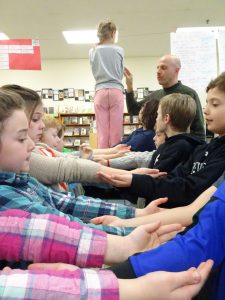 If I had to choose one phrase as a summary of this week I would choose, Learning Community. Our week began with a Trust Fall Challenge with Mr. Caron and ended with a Secret Friend Celebration. At the start of the week everyone took the risk to fall – a first in all my years participating in this challenge. HOW COOL IS THAT! Yesterday we enjoyed lunch together and the sharing of gifts. The time passed in a snap! Thank you for connecting home and school through your conversations and your support of projects that need time and help. Thank you too for your generous donations for the luncheon. I also appreciate your thoughtful emails with questions and concerns. They make me think of ways I can help our class be more successful. I am grateful for your interest, time and attention.
If I had to choose one phrase as a summary of this week I would choose, Learning Community. Our week began with a Trust Fall Challenge with Mr. Caron and ended with a Secret Friend Celebration. At the start of the week everyone took the risk to fall – a first in all my years participating in this challenge. HOW COOL IS THAT! Yesterday we enjoyed lunch together and the sharing of gifts. The time passed in a snap! Thank you for connecting home and school through your conversations and your support of projects that need time and help. Thank you too for your generous donations for the luncheon. I also appreciate your thoughtful emails with questions and concerns. They make me think of ways I can help our class be more successful. I am grateful for your interest, time and attention.
Learning About Metacognition and Mindfulness
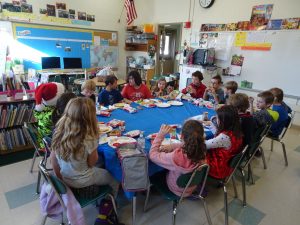 We’ve continued having thoughtful conversations about learning and what we can each do to challenge ourselves. We’ve asked a lot of questions. What is learning? How do you know you are learning? Are some things we learn more important then others? Each morning for the past two weeks we’ve been trying to notice and note things that we’ve learned each day. The goal of this process is to provide the children with to opportunity to recognize that they are in charge of their own learning. They can choose how much they invest in their own learning. They can create their own challenges within each task – should I work fast to be the first done or should I think about trying something I’ve never done before? If something is easy, is it worth doing? If something it hard, is it worth doing? I can I turn something that seems easy into something I can learn from? There are no set answers to these questions. And sometimes we’ve been surprised by what we discover in our conversations.
We’ve continued having thoughtful conversations about learning and what we can each do to challenge ourselves. We’ve asked a lot of questions. What is learning? How do you know you are learning? Are some things we learn more important then others? Each morning for the past two weeks we’ve been trying to notice and note things that we’ve learned each day. The goal of this process is to provide the children with to opportunity to recognize that they are in charge of their own learning. They can choose how much they invest in their own learning. They can create their own challenges within each task – should I work fast to be the first done or should I think about trying something I’ve never done before? If something is easy, is it worth doing? If something it hard, is it worth doing? I can I turn something that seems easy into something I can learn from? There are no set answers to these questions. And sometimes we’ve been surprised by what we discover in our conversations.
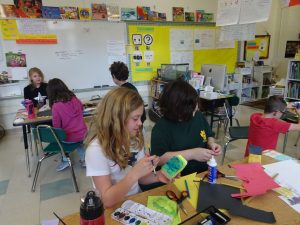 We’ve also spent some time, both in the classroom and with Ms. Vas, learning about mindfulness. Ms. Vas began teaching us some deep breathing techniques this week. We are hoping this practice will help us match our response to the size of the problem more often. We’ll become more focused and be better able to
We’ve also spent some time, both in the classroom and with Ms. Vas, learning about mindfulness. Ms. Vas began teaching us some deep breathing techniques this week. We are hoping this practice will help us match our response to the size of the problem more often. We’ll become more focused and be better able to
Creating a Map of Sassafras Springs
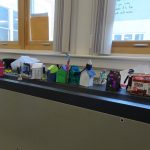
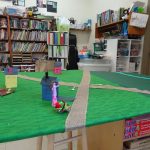 We finished reading The Seven Wonders of Sassafras Springs. Eben did find seven Wonders, but he wasn’t able to go to Colorado because of an outbreak of influenza. He did get to go to St. Louis though and he also learned the value of community. In the book Eben thought, “I sat there, thinking about the Wonders as the evening shadows settled over the barnyard. A doll. A bookcase. A saw. A table. A ship in a bottle. A woven cloth. They were all as unimpressive and ordinary as Sassafras Springs, yet each in its own way was a one-of-a-kind marvel.”
We finished reading The Seven Wonders of Sassafras Springs. Eben did find seven Wonders, but he wasn’t able to go to Colorado because of an outbreak of influenza. He did get to go to St. Louis though and he also learned the value of community. In the book Eben thought, “I sat there, thinking about the Wonders as the evening shadows settled over the barnyard. A doll. A bookcase. A saw. A table. A ship in a bottle. A woven cloth. They were all as unimpressive and ordinary as Sassafras Springs, yet each in its own way was a one-of-a-kind marvel.”
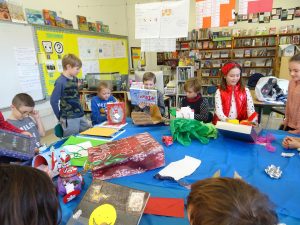 And Uncle Alf, the creator of the seventh Wonder reminded Eben, “Now that you’ve found seven Wonders, I’ll bet you’ll notice new ones every day.” We think we could look for Wonders too.
And Uncle Alf, the creator of the seventh Wonder reminded Eben, “Now that you’ve found seven Wonders, I’ll bet you’ll notice new ones every day.” We think we could look for Wonders too.
After finishing we decided to build of map showing what we think of as the fifteen most important people and places in the town. We used clothespins for people just like Aunt Pretty did in the story and we used milk cartons for the base of the buildings. We’re adding details to our yards and features to our map. This is an example of the project that is simple, but can be turned into more of a challenge by thinking about how we can add details to make the scene more realistic. We’re having fun following our imagination.
Why is Snow White?
Snow Angles
 We also revisited angles in math while looking at different snowflakes. There are many ways to look at the angles of a snow crystal. Once you start looking it seems as though you can’t stop.
We also revisited angles in math while looking at different snowflakes. There are many ways to look at the angles of a snow crystal. Once you start looking it seems as though you can’t stop.
We also discovered why snow looks white when it is made of something clear. We
had fun discovering how and why something transparent becomes more opaque.
Bits and Pieces:
- Mrs. Hyett visited us on Tuesday to share some Hanukkah traditions. We had sufganyot (jelly doughnuts) and gelt.
- We continued to talk about The Size of the Problem and The Size of the Reaction with Ms. Vas.
- We each selected our country for our global geography project.
- And we hope to collect family stories over the vacation.
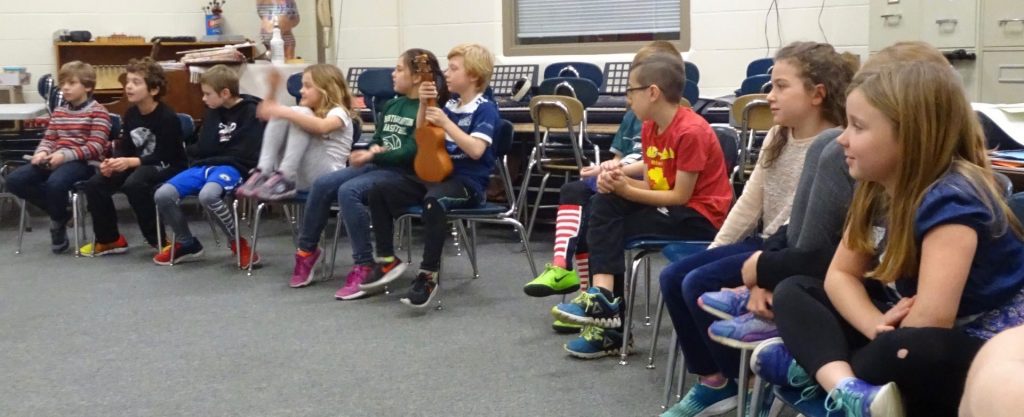




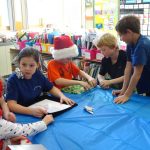
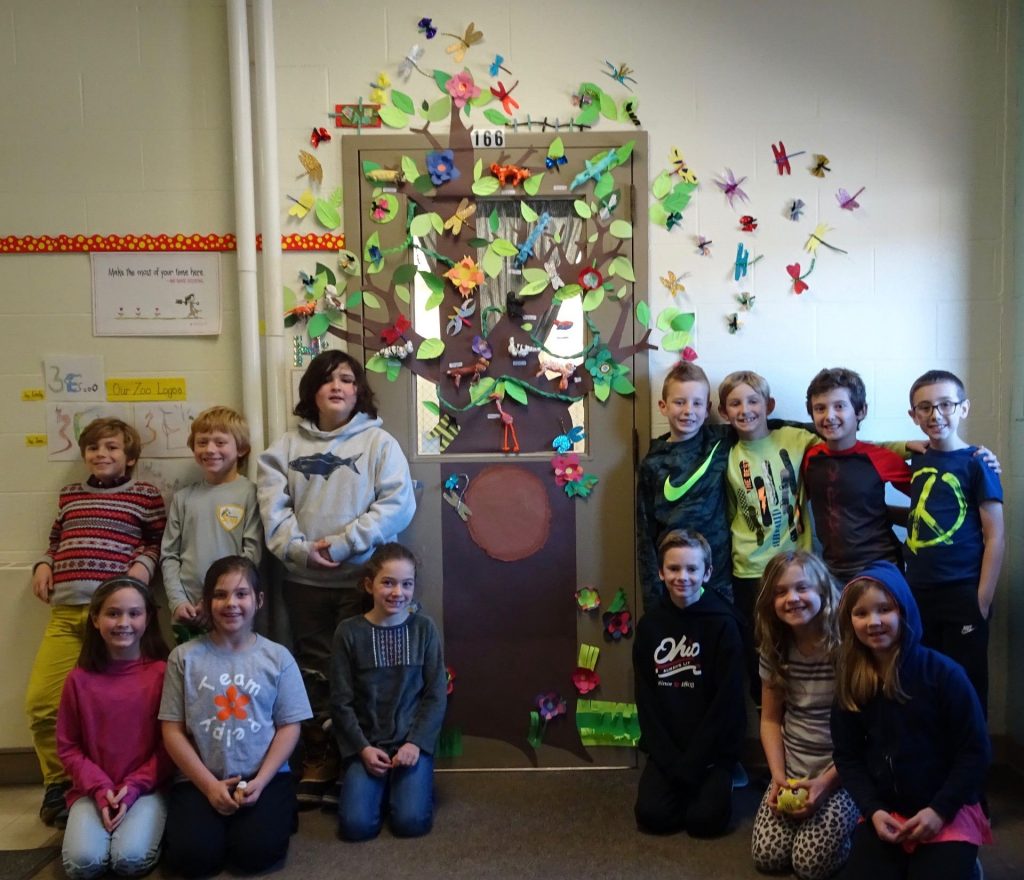 It is certainly an exciting time of year. There’s a lot going on everywhere. The children are busy, excited and tired. Please encourage them to make an extra effort to be safe and kind to each other.
It is certainly an exciting time of year. There’s a lot going on everywhere. The children are busy, excited and tired. Please encourage them to make an extra effort to be safe and kind to each other.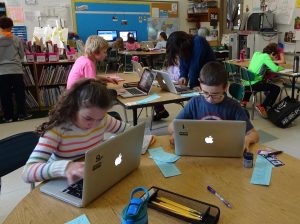 Last week I wrote about changes I hoped to implement in our classroom based on several discussions at parent conferences. We began one this week. We’ve taken steps to slow down and notice how we can be our best in the present. Our Social and Emotional Learning has centered self-control and taking the perspective of others this week. We’ve been looking for ways to practice mindfulness more often in our classroom. Ask your child about The Three Questions and their answers. If you’re not familiar with this book, it is one you can read often. You’ll think of or notice something different with each reading.
Last week I wrote about changes I hoped to implement in our classroom based on several discussions at parent conferences. We began one this week. We’ve taken steps to slow down and notice how we can be our best in the present. Our Social and Emotional Learning has centered self-control and taking the perspective of others this week. We’ve been looking for ways to practice mindfulness more often in our classroom. Ask your child about The Three Questions and their answers. If you’re not familiar with this book, it is one you can read often. You’ll think of or notice something different with each reading.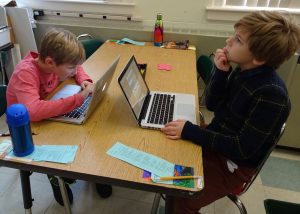 We began a daily reflective practice of attempting to identify something we’ve learned each day. The first thing we do each morning is to jot something down what we think we’ve learned. We’re working to note and notice events of learning. We’re developing our abilities to reflect and become more aware of when and how we learn. It’s not easy at all. If you give it a try you may discover, as I did, that the expression, “You learn something new every day” is a challenging adage to live up to. Some children are sharing what they are doing, “I learned be aggressive on the basketball court.” Or “I played wall ball in the snow.” Others are writing about things they’ve observed, “I saw a flock of birds. I noticed it because it was in a cursive v and I never saw a flock of birds like that.” Some recorded things they have done at school, “I can make very cool paper leaves,” but most are recalling things they have done outside of school. “I learned how to make pumpkin bread.”
We began a daily reflective practice of attempting to identify something we’ve learned each day. The first thing we do each morning is to jot something down what we think we’ve learned. We’re working to note and notice events of learning. We’re developing our abilities to reflect and become more aware of when and how we learn. It’s not easy at all. If you give it a try you may discover, as I did, that the expression, “You learn something new every day” is a challenging adage to live up to. Some children are sharing what they are doing, “I learned be aggressive on the basketball court.” Or “I played wall ball in the snow.” Others are writing about things they’ve observed, “I saw a flock of birds. I noticed it because it was in a cursive v and I never saw a flock of birds like that.” Some recorded things they have done at school, “I can make very cool paper leaves,” but most are recalling things they have done outside of school. “I learned how to make pumpkin bread.”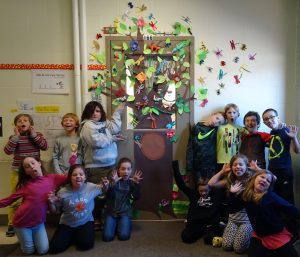 4th grade issued a challenge to “Deck the Halls.” They are responsible for this month’s Community meeting AND are preparing for their community service project to sing carols to residents of local nursing homes. They’ll be sharing our doors in this process.
4th grade issued a challenge to “Deck the Halls.” They are responsible for this month’s Community meeting AND are preparing for their community service project to sing carols to residents of local nursing homes. They’ll be sharing our doors in this process. Throughout this process we read several books, including This is the Earth and Lots: Celebrating Diversity on Earth. They helped add meaning to the last verse of a favorite song in our classroom, Habitat: “People are different from foxes and rabbits, We effect the whole world with our bad habits, Better to love it while we still have it, Or rat-a-tat-tat our habitat’s gone.” We talked about what it means to be stewards of our Earth. Every little thing counts: don’t take more than you need, try not to waste supplies, turn off the lights, reuse whatever you can… You may want to extend this conversation at home by talking about how your family conserves and cares for Earth as well.
Throughout this process we read several books, including This is the Earth and Lots: Celebrating Diversity on Earth. They helped add meaning to the last verse of a favorite song in our classroom, Habitat: “People are different from foxes and rabbits, We effect the whole world with our bad habits, Better to love it while we still have it, Or rat-a-tat-tat our habitat’s gone.” We talked about what it means to be stewards of our Earth. Every little thing counts: don’t take more than you need, try not to waste supplies, turn off the lights, reuse whatever you can… You may want to extend this conversation at home by talking about how your family conserves and cares for Earth as well. In math this week we’ve been learning about time, reading and comparing analog and digital clocks. We are getting better at reading the time and at accounting for elapsed time. We are using telling time as another tool to help us master the 5’s table in multiplication as well. Several of the children have made that connection. As we continue to practice reading clocks and identifying the time more are sure to make that connection.
In math this week we’ve been learning about time, reading and comparing analog and digital clocks. We are getting better at reading the time and at accounting for elapsed time. We are using telling time as another tool to help us master the 5’s table in multiplication as well. Several of the children have made that connection. As we continue to practice reading clocks and identifying the time more are sure to make that connection.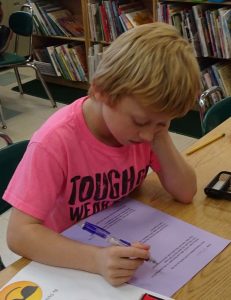 This week took another round of timed fact checks, adding multiplication into the mix. Thank you for your attention to this at home by playing games and helping your child practice. The facts are learned through lots of repetition. Some of the children feel discouraged, “I’m just not good at this” or “I can’t do this.” Please help them realize they most definitely CAN accomplish this goal if they want to. It will take focus and determined action on their part. It won’t just wash over them between now and the next fact check. Despite how the children felt about the fact check, the class made great improvement.
This week took another round of timed fact checks, adding multiplication into the mix. Thank you for your attention to this at home by playing games and helping your child practice. The facts are learned through lots of repetition. Some of the children feel discouraged, “I’m just not good at this” or “I can’t do this.” Please help them realize they most definitely CAN accomplish this goal if they want to. It will take focus and determined action on their part. It won’t just wash over them between now and the next fact check. Despite how the children felt about the fact check, the class made great improvement.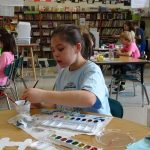 We’ve started our collection of interview questions to help us gather family stories. I hope over the break children will have time to collect a few.
We’ve started our collection of interview questions to help us gather family stories. I hope over the break children will have time to collect a few. While we built our Tree of Life, we put a hold on learning more about mapping and our world. I hope that by the end of next week the children will have selected a country to research and become an expert on.
While we built our Tree of Life, we put a hold on learning more about mapping and our world. I hope that by the end of next week the children will have selected a country to research and become an expert on.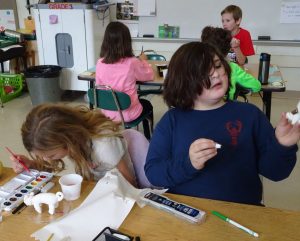

 I have appreciated meeting and planning with you about how we can best support your child’s learning during the next part of the school year. Thank you for your time and effort. Because of our conversations, I’ll be planning more frequent small group opportunities, begin some reflective journaling designed to help children become more self-directed and setting aside a corner of the classroom as a recording studio where children can document their understanding and comprehension orally. I look forward to discovering how these options will add to the opportunities of our classroom.
I have appreciated meeting and planning with you about how we can best support your child’s learning during the next part of the school year. Thank you for your time and effort. Because of our conversations, I’ll be planning more frequent small group opportunities, begin some reflective journaling designed to help children become more self-directed and setting aside a corner of the classroom as a recording studio where children can document their understanding and comprehension orally. I look forward to discovering how these options will add to the opportunities of our classroom. This week we explored maps. We read about them. We learned that most maps have six basic elements: keys (or legends), a compass rose, a scale, a title, labels and symbols. We put map puzzles together. We tried to create paper maps of the world. We drew maps of the classroom and worked as teams to create a 3-D map of our classroom. We tried including all of the elements (excluding scale) when we created maps of our yards. Next week we’ll be using our maps to lead us into some personal narratives telling about the places we play and the stories that grow from our games and imagination.
This week we explored maps. We read about them. We learned that most maps have six basic elements: keys (or legends), a compass rose, a scale, a title, labels and symbols. We put map puzzles together. We tried to create paper maps of the world. We drew maps of the classroom and worked as teams to create a 3-D map of our classroom. We tried including all of the elements (excluding scale) when we created maps of our yards. Next week we’ll be using our maps to lead us into some personal narratives telling about the places we play and the stories that grow from our games and imagination. In addition to mapping we’ve been exploring the ways people divide up and label the places that we live. It is abstract and seems to feel random to the children. We live in neighborhoods, towns, counties, states, countries and continents. You can see from some of the work sent home this week that this can be confusing. It is interesting to learn about our place in the world and it is interesting to understand how others live as well – the same, but different. Next week the children will be selecting a country to research and share with others.
In addition to mapping we’ve been exploring the ways people divide up and label the places that we live. It is abstract and seems to feel random to the children. We live in neighborhoods, towns, counties, states, countries and continents. You can see from some of the work sent home this week that this can be confusing. It is interesting to learn about our place in the world and it is interesting to understand how others live as well – the same, but different. Next week the children will be selecting a country to research and share with others. Also next week, the class will develop a set of interview questions. We hope to be able to talk to extended family members and uncover their stories from third grade (or there about) as well. We are hoping to ask grandparents, aunts and uncles, cousins or special family friends to share stories. After the December break, we’ll try to write some of those stories down too. When each of the children has collected a handful to stories, they’ll be asked to choose one to develop, revise and polish until it is ready to be published.
Also next week, the class will develop a set of interview questions. We hope to be able to talk to extended family members and uncover their stories from third grade (or there about) as well. We are hoping to ask grandparents, aunts and uncles, cousins or special family friends to share stories. After the December break, we’ll try to write some of those stories down too. When each of the children has collected a handful to stories, they’ll be asked to choose one to develop, revise and polish until it is ready to be published.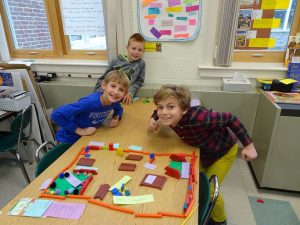 We’ve begun to learn about sketch-noting as a tool to enhance comprehension. We’re learning more about visualizing and adding actions and details to our mind pictures as we listen to read-alouds and also as we read independently.
We’ve begun to learn about sketch-noting as a tool to enhance comprehension. We’re learning more about visualizing and adding actions and details to our mind pictures as we listen to read-alouds and also as we read independently.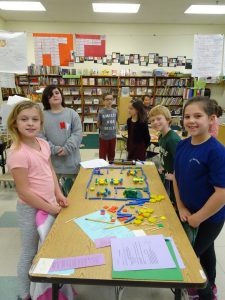 It would be greatly appreciated if you could find time to talk with your child about what it means at your house to put forth one’s best effort. For some children, it seems, working fast is best. That means they skim across the activities doing what they already know rather than extending them to learn “new”. As a result, expectations are only partially met. For other children it seems as though assignments are secondary, being social comes first. Conversation consumes their time. They approach tasks as if they can get them done eventually. As a result of these choices, expectations are seldom met. They simply run out of time. All of the children need support with organizing, prioritizing and managing time. They need to find ways to listen to their inner voice as they explore ideas and find opportunities for learning in all they do whether simple or complex. Our new learning journals are an attempt in the classroom to build these understandings, deepen thinking and strengthen self-monitoring skills. Thank you for your help in exploring these ideas with your child. It is exciting to see how learning grows.
It would be greatly appreciated if you could find time to talk with your child about what it means at your house to put forth one’s best effort. For some children, it seems, working fast is best. That means they skim across the activities doing what they already know rather than extending them to learn “new”. As a result, expectations are only partially met. For other children it seems as though assignments are secondary, being social comes first. Conversation consumes their time. They approach tasks as if they can get them done eventually. As a result of these choices, expectations are seldom met. They simply run out of time. All of the children need support with organizing, prioritizing and managing time. They need to find ways to listen to their inner voice as they explore ideas and find opportunities for learning in all they do whether simple or complex. Our new learning journals are an attempt in the classroom to build these understandings, deepen thinking and strengthen self-monitoring skills. Thank you for your help in exploring these ideas with your child. It is exciting to see how learning grows.

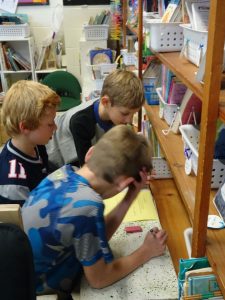 We’ve done a great deal since the last note home. We went to the New Hampshire Farm Museum in Milford to learn lots about living in the mid-1800s. We’ve created and shared our animals and habitats at the Animal Wonderland. And we’ve shared our goals for learning during our student led conferences. Each of these special things happened while we continued on with reading, writing, math and content studies each day as well. Thank you for encouraging and supporting these efforts by talking about them at home and encouraging your child to think more about learning.
We’ve done a great deal since the last note home. We went to the New Hampshire Farm Museum in Milford to learn lots about living in the mid-1800s. We’ve created and shared our animals and habitats at the Animal Wonderland. And we’ve shared our goals for learning during our student led conferences. Each of these special things happened while we continued on with reading, writing, math and content studies each day as well. Thank you for encouraging and supporting these efforts by talking about them at home and encouraging your child to think more about learning.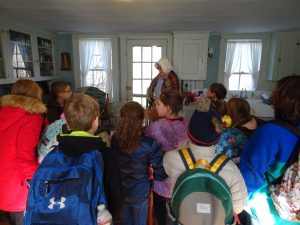 Two weeks ago we learned that Sarah Hale spent over twenty years trying to persuade the country to declare Thanksgiving a national holiday. She thought a day should be set aside for gratitude and she thought it should be a national observance that could make our country stronger. Four presidents disagreed, but the fifth, Abraham Lincoln, just after the battle of Gettysburg, agreed. He too could see that our country needed a time to reflect on good during a very sad time.
Two weeks ago we learned that Sarah Hale spent over twenty years trying to persuade the country to declare Thanksgiving a national holiday. She thought a day should be set aside for gratitude and she thought it should be a national observance that could make our country stronger. Four presidents disagreed, but the fifth, Abraham Lincoln, just after the battle of Gettysburg, agreed. He too could see that our country needed a time to reflect on good during a very sad time. It was interesting to get a glimpse of what family life was at that time at the farm museum. It was different to be sure and while we had fun doing the work on that one cold day, we could see that it might be tough to keep it up day after day.
It was interesting to get a glimpse of what family life was at that time at the farm museum. It was different to be sure and while we had fun doing the work on that one cold day, we could see that it might be tough to keep it up day after day.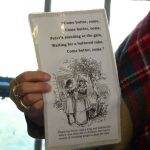 We’ve also learned lots of different things related to the history of Thanksgiving in our book clubs. Talk to your child about the book he or she chose to read and the information it shares about our national celebration.
We’ve also learned lots of different things related to the history of Thanksgiving in our book clubs. Talk to your child about the book he or she chose to read and the information it shares about our national celebration.


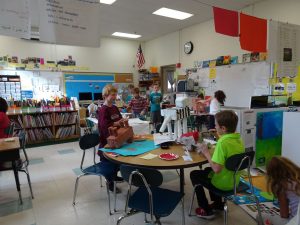

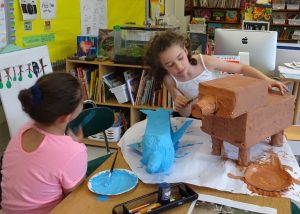
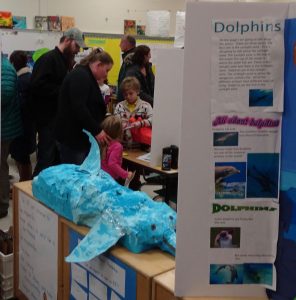
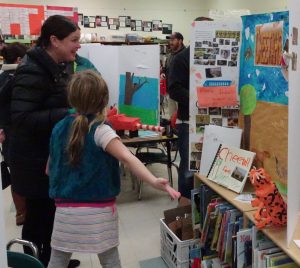

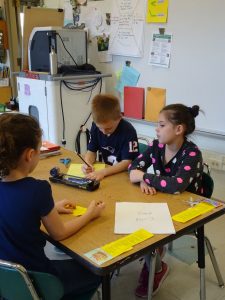 I appreciate the opportunity to listen to the children share their work with you. It is one thing to talk about learning goals in the classroom and to encourage each learner to reflect on what he or she is doing in a way that helps them achieve even more. It is another thing to share and explain that makes that talk real. Thinking about thinking and learning matters. That reflection deepens understanding and third graders are just beginning stages to recognize this. Given opportunities to practice, they will become powerful thinkers. When you ask your child to tell you more about his or her thinking, you are stretching them even more. Why do you want to read a fatter book? How will reading more pages make you a stronger reader? Why do you want to solve problems quickly? How will being fast make you a more skilled mathematician? Each question helps them pause and consider how they can develop more purposeful goals and become confident, self-directed, lifelong learners.
I appreciate the opportunity to listen to the children share their work with you. It is one thing to talk about learning goals in the classroom and to encourage each learner to reflect on what he or she is doing in a way that helps them achieve even more. It is another thing to share and explain that makes that talk real. Thinking about thinking and learning matters. That reflection deepens understanding and third graders are just beginning stages to recognize this. Given opportunities to practice, they will become powerful thinkers. When you ask your child to tell you more about his or her thinking, you are stretching them even more. Why do you want to read a fatter book? How will reading more pages make you a stronger reader? Why do you want to solve problems quickly? How will being fast make you a more skilled mathematician? Each question helps them pause and consider how they can develop more purposeful goals and become confident, self-directed, lifelong learners. Global Geography and Mapping
Global Geography and Mapping Eben’s begun collecting
Eben’s begun collecting  Thank you all for selecting a conference time for your child to share his or her portfolio and learning goals. We are looking forward to sharing with you. This week has been full of planning and making. We are putting our portfolios together. We’re creating our animals for the zoo and building our habitats too. And we are reading together in Thanksgiving book clubs. 3E is a busy place.
Thank you all for selecting a conference time for your child to share his or her portfolio and learning goals. We are looking forward to sharing with you. This week has been full of planning and making. We are putting our portfolios together. We’re creating our animals for the zoo and building our habitats too. And we are reading together in Thanksgiving book clubs. 3E is a busy place.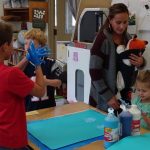

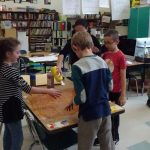 On Tuesday morning we began the day with white tri-folds and 24”x36” sheets of paper. By the end to the day, thanks to Kristen Samson, Melissa Romanowsky and Nermina Peterson, our habitat backgrounds had begun to take shape. Thank you for helping us with this project.
On Tuesday morning we began the day with white tri-folds and 24”x36” sheets of paper. By the end to the day, thanks to Kristen Samson, Melissa Romanowsky and Nermina Peterson, our habitat backgrounds had begun to take shape. Thank you for helping us with this project.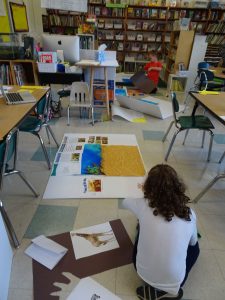 Our zoo project seems to have inspired many ideas. Thank you for encouraging and supporting these home school connections. Children have created original zoo logos. This week Emily launched her “Good Deeds Club.” The kids are very excited about finding ways to raise money for endangered animals and people in need as well. Annika invented animal shaped pads of paper and taught us how to make them. It is exciting to see how the ideas connect and extend from one thing to another. I think that our animals and the zoo will be with us long after the formal study of habitats and informational reading and writing are over.
Our zoo project seems to have inspired many ideas. Thank you for encouraging and supporting these home school connections. Children have created original zoo logos. This week Emily launched her “Good Deeds Club.” The kids are very excited about finding ways to raise money for endangered animals and people in need as well. Annika invented animal shaped pads of paper and taught us how to make them. It is exciting to see how the ideas connect and extend from one thing to another. I think that our animals and the zoo will be with us long after the formal study of habitats and informational reading and writing are over.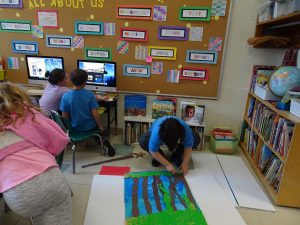 This week we began reading more about Thanksgiving. We’ve learned some about the first Thanksgiving and also some of how Thanksgiving was first proclaimed a national holiday. Did you know this happened all because of a New Hampshire woman, Sarah Josepha Hale? Ask your child what he or she remembers about her and her efforts to set aside a day of thanks in our country. Sarah was a determined woman who did some amazing things in the early 1800’s when opportunities for women were very limited.
This week we began reading more about Thanksgiving. We’ve learned some about the first Thanksgiving and also some of how Thanksgiving was first proclaimed a national holiday. Did you know this happened all because of a New Hampshire woman, Sarah Josepha Hale? Ask your child what he or she remembers about her and her efforts to set aside a day of thanks in our country. Sarah was a determined woman who did some amazing things in the early 1800’s when opportunities for women were very limited.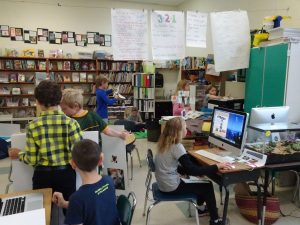 We are looking forward to learning more about the history of Thanksgiving when we go to the NH Farm Museum on Monday.
We are looking forward to learning more about the history of Thanksgiving when we go to the NH Farm Museum on Monday.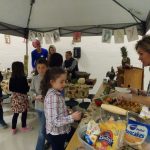
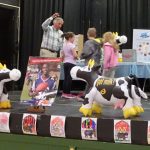 We’ve begun 5th chapter read-aloud, The Seven Wonders of Sassafras Springs. It takes place in 1923. It is first historical novel and it is adding more to our understanding of how things like transportation, schooling and even shopping changes over time.
We’ve begun 5th chapter read-aloud, The Seven Wonders of Sassafras Springs. It takes place in 1923. It is first historical novel and it is adding more to our understanding of how things like transportation, schooling and even shopping changes over time.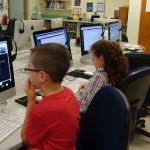 We’ve also discovered that rounding to the nearest 10 or 100 is pretty easy. We can also use that skill to quickly check if some of our other math calculations are accurate or not.
We’ve also discovered that rounding to the nearest 10 or 100 is pretty easy. We can also use that skill to quickly check if some of our other math calculations are accurate or not.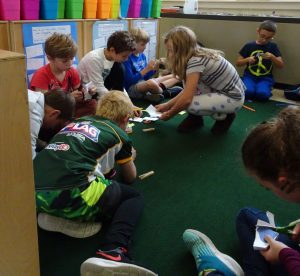
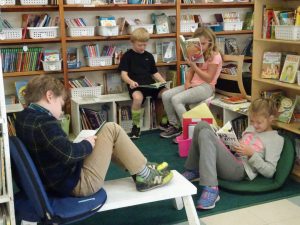 As my meetings ended after school on Wednesday I realized, with a shock, that it was the end of our week. Our days are full and productive. The woodland habitat we created as a class on at the end of last week is thriving. We followed Derek’s suggestion to create a desert habitat on Tuesday and that seems to be thriving as well. We look forward to making observations of them throughout the school year. This week our classroom time has been full of life science, informational writing, reading of all types and math with angels, symmetry, rounding and problem solving.
As my meetings ended after school on Wednesday I realized, with a shock, that it was the end of our week. Our days are full and productive. The woodland habitat we created as a class on at the end of last week is thriving. We followed Derek’s suggestion to create a desert habitat on Tuesday and that seems to be thriving as well. We look forward to making observations of them throughout the school year. This week our classroom time has been full of life science, informational writing, reading of all types and math with angels, symmetry, rounding and problem solving. One of the things development psychologists know is that providing opportunities for children to reflect and consider their choices is one of the best ways we can promote independence and self-directed learning. Developmental research shows that third graders are beginning to grasp the power of reflection. Some children are able to consider “what-if” as they choose and set learning goals that extend beyond the information presented in direct instruction. An example of this is: “I am growing as a reader when I learn new words and can figure their meaning out from the story and what the characters do.” Other children are still more concrete in their thinking. They see learning as a “bigger and faster, so better” activity. For example: “I am growing as a reader when I read fatter books.” It is interesting as a classroom teacher to see they whole spectrum. This is a skill that improves with practice, so it is exciting to provide children opportunity to think about how their choices can lead them to success.
One of the things development psychologists know is that providing opportunities for children to reflect and consider their choices is one of the best ways we can promote independence and self-directed learning. Developmental research shows that third graders are beginning to grasp the power of reflection. Some children are able to consider “what-if” as they choose and set learning goals that extend beyond the information presented in direct instruction. An example of this is: “I am growing as a reader when I learn new words and can figure their meaning out from the story and what the characters do.” Other children are still more concrete in their thinking. They see learning as a “bigger and faster, so better” activity. For example: “I am growing as a reader when I read fatter books.” It is interesting as a classroom teacher to see they whole spectrum. This is a skill that improves with practice, so it is exciting to provide children opportunity to think about how their choices can lead them to success. We also talked about how intelligence grows. We know we can change and grow in any way we choose. My example is that I am always embarrassed that I cannot dribble a ball and move at the same time. The truth is, I’ve never had the opportunity to learn and I’ve never taken the time to practice. Clearly if that skill truly mattered to me, I’d practice until I could do it. That is the case for them too. They can do anything they choose to do!
We also talked about how intelligence grows. We know we can change and grow in any way we choose. My example is that I am always embarrassed that I cannot dribble a ball and move at the same time. The truth is, I’ve never had the opportunity to learn and I’ve never taken the time to practice. Clearly if that skill truly mattered to me, I’d practice until I could do it. That is the case for them too. They can do anything they choose to do! Looking for Volunteers
Looking for Volunteers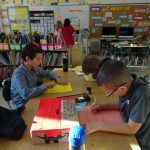 This week we’ve begun to explore the rules of rounding to the nearest 10. We are learning this so we can make quick estimates to judge the accuracy of our problem solving. The children have had fun with these activities.
This week we’ve begun to explore the rules of rounding to the nearest 10. We are learning this so we can make quick estimates to judge the accuracy of our problem solving. The children have had fun with these activities. The
The 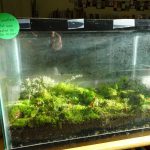 Report Cards
Report Cards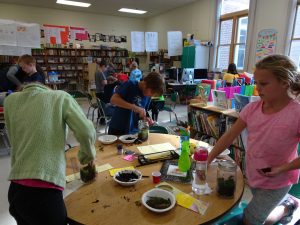 Just as we are getting into a groove, our week ends. The kids moan each time I say, “I’m sorry but it’s time for…” “What, we just got started.” It’s true. Still, I hope your child has lots to say about his or her research, writing, reading and the science and math we are exploring. This week most of our work has been project based. You’ll notice there are few work samples sent home. Thank you, though, for the time you take each week to review that work with your child. Also thank you for helping make time for homework. We’ve got another math fact check coming up in a couple weeks so playing games to give the children repeated practice and help them feel more at ease is much appreciated.
Just as we are getting into a groove, our week ends. The kids moan each time I say, “I’m sorry but it’s time for…” “What, we just got started.” It’s true. Still, I hope your child has lots to say about his or her research, writing, reading and the science and math we are exploring. This week most of our work has been project based. You’ll notice there are few work samples sent home. Thank you, though, for the time you take each week to review that work with your child. Also thank you for helping make time for homework. We’ve got another math fact check coming up in a couple weeks so playing games to give the children repeated practice and help them feel more at ease is much appreciated.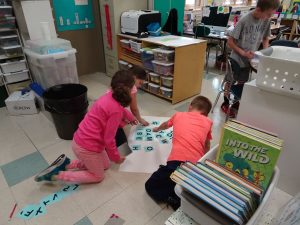 This week we took some time to name the shapes in our calendar’s pattern. We learned the term polygon and know it stands for all straight-sided, closed shapes. Next we learned the term quadrilateral. It a name for all 4-sided, closed shapes. We already knew about triangles, pentagons and hexagons, but our pattern does have some unusual shapes too.
This week we took some time to name the shapes in our calendar’s pattern. We learned the term polygon and know it stands for all straight-sided, closed shapes. Next we learned the term quadrilateral. It a name for all 4-sided, closed shapes. We already knew about triangles, pentagons and hexagons, but our pattern does have some unusual shapes too.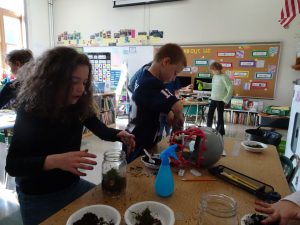 This week we continued to learn more about habitats. (Ask your child to share the chorus of our new song. It is catchy and fun to sing.) We know that habitats are the places where living things’ basic needs are met. We know those needs are: air, water, sunlight/heat, shelter and companionship and/or safe care. This week we expanded our understanding even further as we began to explore and define the differences between macro- and micro-habitats. Forests are an example of a macro-habitat. A hole in a tree is an example of one micro-habitat found within a forest. Each of the children knows what their animal’s habitat is. Next we’ll be identifying a food web that each animal is a part of.
This week we continued to learn more about habitats. (Ask your child to share the chorus of our new song. It is catchy and fun to sing.) We know that habitats are the places where living things’ basic needs are met. We know those needs are: air, water, sunlight/heat, shelter and companionship and/or safe care. This week we expanded our understanding even further as we began to explore and define the differences between macro- and micro-habitats. Forests are an example of a macro-habitat. A hole in a tree is an example of one micro-habitat found within a forest. Each of the children knows what their animal’s habitat is. Next we’ll be identifying a food web that each animal is a part of. To bring these concepts to life, each of the children created their own temperate woodlands habitat (a.k.a. a terrarium). The children took them home to observe. We created a slightly larger habitat to observe in the classroom. Please encourage your child to place them in a sunny area – (direct sun for a long portion of the day may be too hot for the plants)– and observe the changes. It should only be opened if it becomes excessively damp and/or mold begins to grow. The sealed jar is its own ecosystem and is a habitat that provides everything the plants need to survive. Help your child notice, if he or she hasn’t already, how clouds and condensation forms. Over time, help them notice how the number of leaves on the partridge berries change or when the mosses’ spores show up. They should last indefinitely, but sometimes its nice to begin again when the forests grows so much it seems more like a murky jungle.
To bring these concepts to life, each of the children created their own temperate woodlands habitat (a.k.a. a terrarium). The children took them home to observe. We created a slightly larger habitat to observe in the classroom. Please encourage your child to place them in a sunny area – (direct sun for a long portion of the day may be too hot for the plants)– and observe the changes. It should only be opened if it becomes excessively damp and/or mold begins to grow. The sealed jar is its own ecosystem and is a habitat that provides everything the plants need to survive. Help your child notice, if he or she hasn’t already, how clouds and condensation forms. Over time, help them notice how the number of leaves on the partridge berries change or when the mosses’ spores show up. They should last indefinitely, but sometimes its nice to begin again when the forests grows so much it seems more like a murky jungle.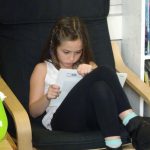 Our school pictures will be taken
Our school pictures will be taken 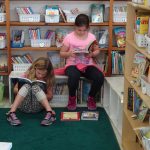 We are
We are  Our classroom zoo will be held on
Our classroom zoo will be held on 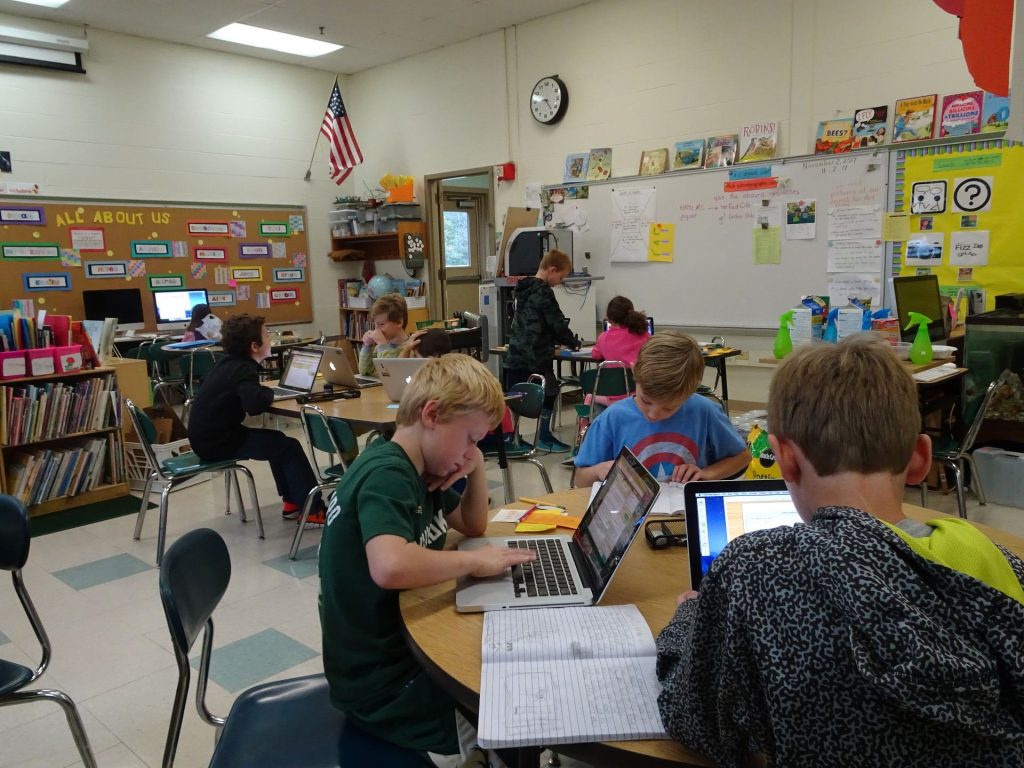
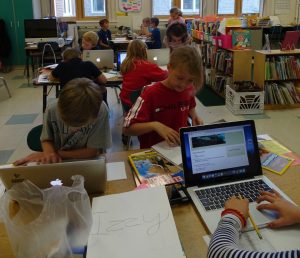 Another week has zipped by. How we long for more time in our classroom for reading, writing and researching, to say nothing of science, spelling, social studies and math. It always seems as if we are going off to something else… we like those things too, but it is hard to build momentum with all the starting, stopping and re-starting again.
Another week has zipped by. How we long for more time in our classroom for reading, writing and researching, to say nothing of science, spelling, social studies and math. It always seems as if we are going off to something else… we like those things too, but it is hard to build momentum with all the starting, stopping and re-starting again. This week we talked about how much time we thought it would take us to complete our research, plan how that information would be presented and then finally to create our habitats and animal. We decided that we could be done in a month’s time.
This week we talked about how much time we thought it would take us to complete our research, plan how that information would be presented and then finally to create our habitats and animal. We decided that we could be done in a month’s time. 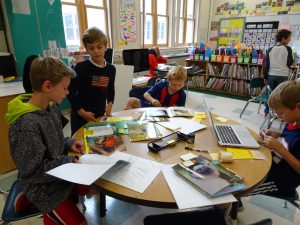 The children are preparing themselves to be able to answer questions about their animal’s habitat and how they are a part of the food web found there. They are learning about their animal’s habits and behaviors. They are learning about the daily routine and family life of their animals. And finally they’re learning about their animal’s diet and what a good home is for them so they feel safe and well cared for.
The children are preparing themselves to be able to answer questions about their animal’s habitat and how they are a part of the food web found there. They are learning about their animal’s habits and behaviors. They are learning about the daily routine and family life of their animals. And finally they’re learning about their animal’s diet and what a good home is for them so they feel safe and well cared for.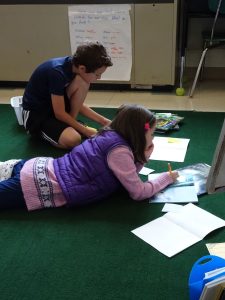 We’ve been learning more about habitats, food chains and food webs in science. We know that the basic needs of all living things are found in their habitat. We identified air, water, food, shelter, sun and feelings of safety and/or companionship as basic needs. We’ve also been exploring what happens when changes are made in a habitat. It can be pretty surprising. We have more to learn about this topic, but it has launched some interesting conversations in the class. I imagine the children would enjoy sharing what they’re discovering with you at home. If Sharks Disappeared was one to the books we reread as we began wondering about these changes.
We’ve been learning more about habitats, food chains and food webs in science. We know that the basic needs of all living things are found in their habitat. We identified air, water, food, shelter, sun and feelings of safety and/or companionship as basic needs. We’ve also been exploring what happens when changes are made in a habitat. It can be pretty surprising. We have more to learn about this topic, but it has launched some interesting conversations in the class. I imagine the children would enjoy sharing what they’re discovering with you at home. If Sharks Disappeared was one to the books we reread as we began wondering about these changes. Looking for Volunteers
Looking for Volunteers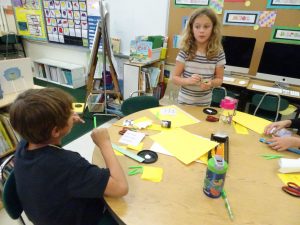 We’ve continued practicing the steps of the distributive property with multiplication. The children are growing in their understanding. Some of them are solving rather complex problems quickly. It seems as though everyone understand what multiplication is. Now we are ready to focus on multiples and learning the facts. This will take lots of practice and time. Thank you so much for helping and encouraging your children as they endeavor to master this new set of facts.
We’ve continued practicing the steps of the distributive property with multiplication. The children are growing in their understanding. Some of them are solving rather complex problems quickly. It seems as though everyone understand what multiplication is. Now we are ready to focus on multiples and learning the facts. This will take lots of practice and time. Thank you so much for helping and encouraging your children as they endeavor to master this new set of facts.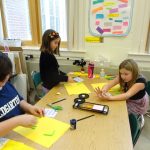
 Our word study focus this week has been on learning all the spelling rules for making nouns plural.
Our word study focus this week has been on learning all the spelling rules for making nouns plural.
 We’ve had a week of firsts. We had our first outdoor challenge with Mr. Caron. We set up our individual blogs and had our first blogging session. That means that very soon first blog posts will be published for the world to read and respond to. And we had an assembly to learning about safety with digital media with speaker, Katie Greer.
We’ve had a week of firsts. We had our first outdoor challenge with Mr. Caron. We set up our individual blogs and had our first blogging session. That means that very soon first blog posts will be published for the world to read and respond to. And we had an assembly to learning about safety with digital media with speaker, Katie Greer.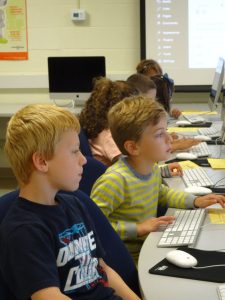 This week Mrs. Wyman helped us set up and personalize our individual blogs. We were able to create a tagline and choose font and background colors. We planned our first post on Tuesday and began typing it on Wednesday. It takes a long time to type (We can see why we’ve been practicing with Typing Pal and have accounts so we can practice even more often at home) but it is an exciting new format for writing. It’s very motivating. To date eleven of the children have completed and published posts. The other students are creating and planning. It feels pretty exciting to be using the computers – both laptops and desktops.
This week Mrs. Wyman helped us set up and personalize our individual blogs. We were able to create a tagline and choose font and background colors. We planned our first post on Tuesday and began typing it on Wednesday. It takes a long time to type (We can see why we’ve been practicing with Typing Pal and have accounts so we can practice even more often at home) but it is an exciting new format for writing. It’s very motivating. To date eleven of the children have completed and published posts. The other students are creating and planning. It feels pretty exciting to be using the computers – both laptops and desktops.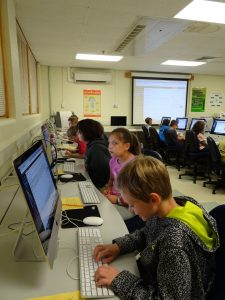 Ask your child if he or she has had the chance to complete a post. Have them show you where to find it. They would love to know that you are seeing their work at home. Please leave a comment when you have a moment. It will definitely put a smile on their faces. Please share the address with grandparents, family and friends. Having a wider audience for writing is exciting. Because of this the children often take more care with spelling and grammar though, of course, it’s not perfect. For the first posts, if the children asked me to, I edited their work. Soon those responsibilities will be all on them. Reading their blogs is fun! Their personality already shows. I can’t wait to see how they grow throughout the year.
Ask your child if he or she has had the chance to complete a post. Have them show you where to find it. They would love to know that you are seeing their work at home. Please leave a comment when you have a moment. It will definitely put a smile on their faces. Please share the address with grandparents, family and friends. Having a wider audience for writing is exciting. Because of this the children often take more care with spelling and grammar though, of course, it’s not perfect. For the first posts, if the children asked me to, I edited their work. Soon those responsibilities will be all on them. Reading their blogs is fun! Their personality already shows. I can’t wait to see how they grow throughout the year.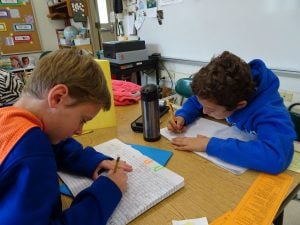 For the past two weeks we have been sharing books written using different formats. This week we were finally able to read a book, If Sharks Disappeared, to learn about a cause and effect format. We also read I, Fly. This mentor text showed us how me might develop a character to present the information in a narrative story format. Hopefully this mini-unit will provide the class with some examples to model their writing after as they present their information to those who visit our zoo.
For the past two weeks we have been sharing books written using different formats. This week we were finally able to read a book, If Sharks Disappeared, to learn about a cause and effect format. We also read I, Fly. This mentor text showed us how me might develop a character to present the information in a narrative story format. Hopefully this mini-unit will provide the class with some examples to model their writing after as they present their information to those who visit our zoo.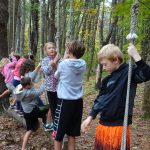 The distributive property is beginning to make more sense. We are working through each step and it is helping us understand the process of multiplying with larger amounts. We do not fully understand the process yet, as you’ll see from daily practice sheets, but we’ll continue to work with it.
The distributive property is beginning to make more sense. We are working through each step and it is helping us understand the process of multiplying with larger amounts. We do not fully understand the process yet, as you’ll see from daily practice sheets, but we’ll continue to work with it.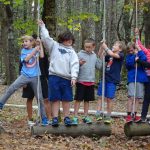 going to set class goals and finally, from these discussions, the children will set goals of their own.
going to set class goals and finally, from these discussions, the children will set goals of their own.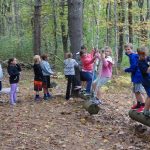

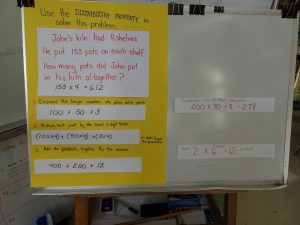
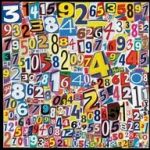 We’ve been learning how the Distributive Property can help us multiply larger numbers. Use the picture to remind you of the steps, and then give these problems a try. You can leave your equations and solution in a comment when you do them.
We’ve been learning how the Distributive Property can help us multiply larger numbers. Use the picture to remind you of the steps, and then give these problems a try. You can leave your equations and solution in a comment when you do them.